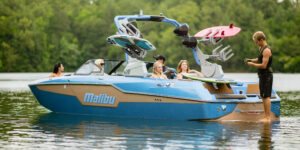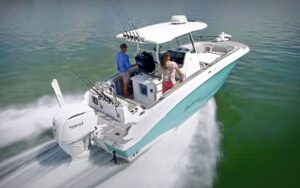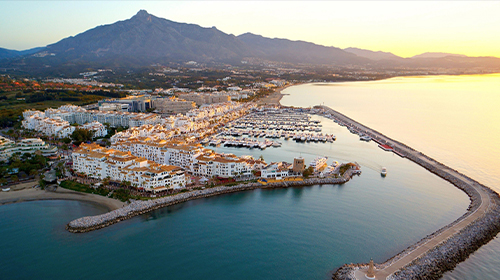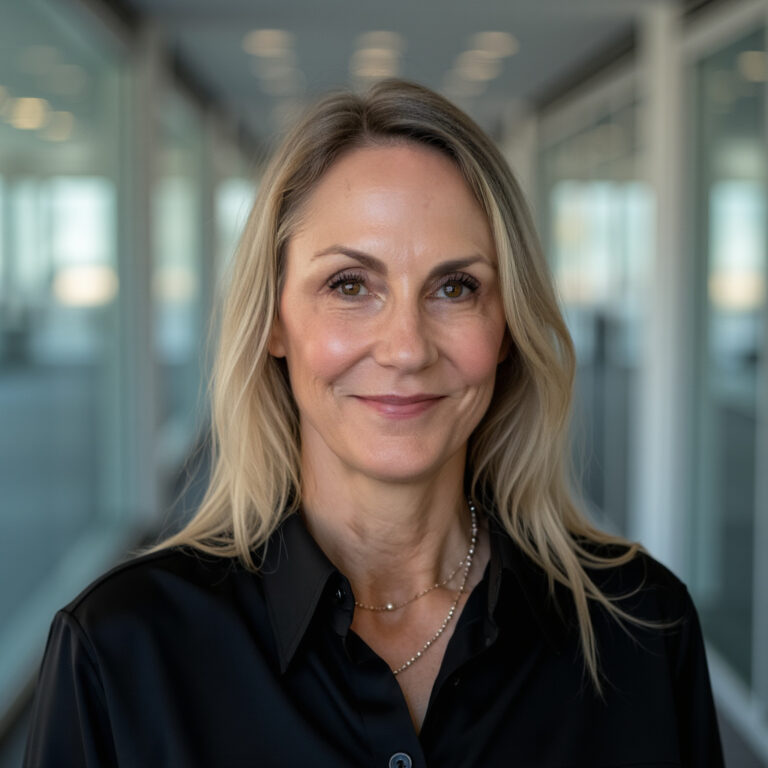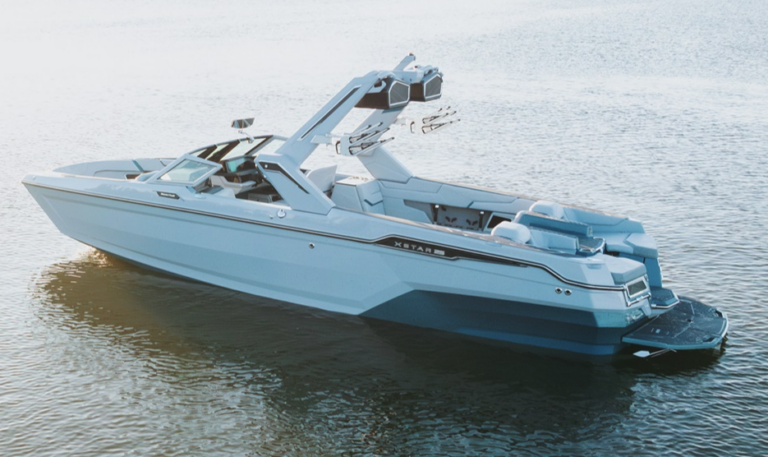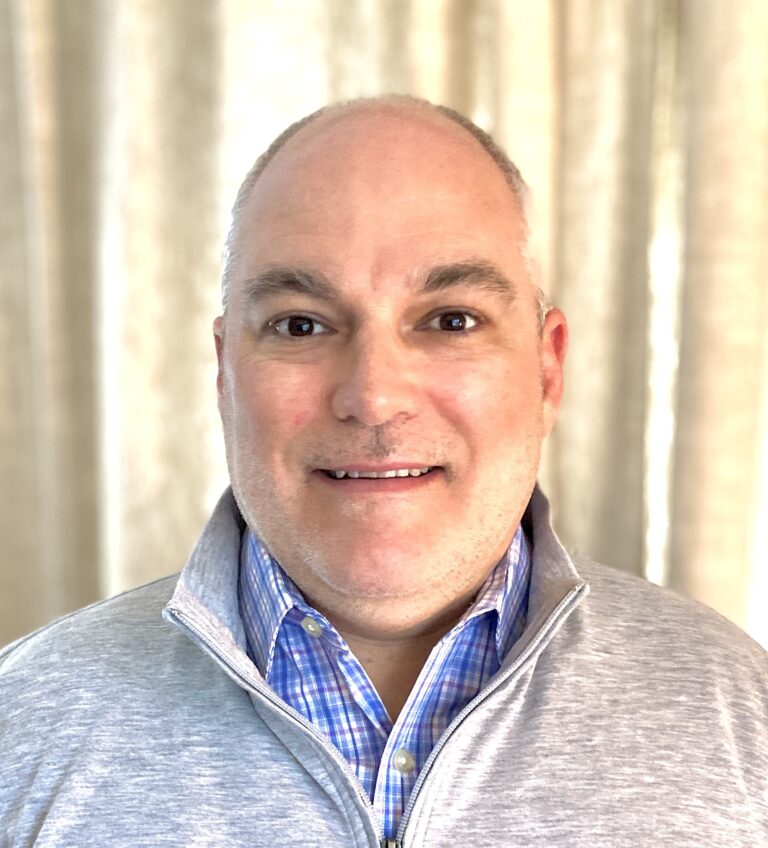
Trade Only Today spoke with David Foulkes, Brunswick Corp’s new CEO, last week during a Mercury event at Lake X outside Orlando.
TOT: It seems like you’re entering the CEO job with a strong management team.
David Foulkes: I couldn’t be more excited about this opportunity and feel very privileged to step into the CEO role following Mark Schwabero. I’m coming in with a team that has tremendous continuity. None of the leaders are new and we’re all contributing to the strategy that has been in place. Over time, we’ll evolve that strategy. I’ve run 20 of the company’s businesses, so I feel that I know the leaders and the businesses. And I know we’re all committed and excited about Brunswick’s future.
TOT: Looking at the latest financials, it seems like the Boat Group did well last year.
DF: We have 12 boat brands, including two brands dedicated to Europe, and every brand is profitable and contributing to the business. Strong aspirational brands like Boston Whaler, Lund and Harris Pontoons are leading the way, as is Sea Ray’s sport-boat business.
The Brunswick Boat Group made $100 million in earnings in 2018. The last time they did that was in 2006 on double the revenues. Most of that was coming from Sea Ray at the time, but now a lot of the brands are contributing strongly, including Sea Ray. It’s a much healthier, more profitable business.
TOT: Has Sea Ray recovered since the closure of the Sport Yacht and Yacht divisions?
DF: That was a tough decision that impacted people who were part of Sea Ray and some dealers who carried the Sport Yachts and Yachts, but the part we retained is very profitable. The profit has increased through last year, accelerating in the back half of the year. The good news is that some of the investments that went into the Yachts division can be redeployed into that part of the Sea Ray portfolio that we retained. We also retained essentially the entire dealer base through the whole process. They are very committed to the go-forward Sea Ray portfolio. The brand has had a really good start this year in both the domestic boat shows and at the Dusseldorf boat show in Europe. We’re really excited about Sea Ray.
TOT: Will 40 feet be your longest length? Do you see yourselves venturing into Hatteras-size lengths again?
DF: We’ve found that we’re very good at building aluminum and fiberglass boats up to 40 feet. When you cross 40 feet, the unit numbers drop off quickly and there’s a much higher level of customization required. I won’t say we won’t ever introduce a 41-ft. model, but our goal is to avoid low volume and high complexity on our boats.
TOT: What about the entry-level segment of the market?
DF: We’re still very interested in that portion of the market. The margins are slimmer so we can’t afford the same levels of investment. But our teams at Bayliner, Lowe and Crestliner are incredibly creative. The businesses are lean, but they’ve found ways of bringing new content into the boats. I like the fact that we can be a bit creative, scrappy and lean in that portion of the marketplace. We want to make sure there are places where consumers can enter boating.
TOT: Has the Lowe brand rebounded after Cabela’s was acquired by Bass Pro Shops?
DF: We had good news and bad news from that acquisition. The bad news is that Lowe was displaced, which accounted for about half of its boats. The good news is that the boats from Tracker Marine, which replaced them, are all powered by Mercury engines so we picked up 100 percent of their engines. Lowe has worked hard to re-establish channels. Cabela’s aren’t all over the country, so many dealers were not affected. We’ve also been the beneficiary of some merger and acquisition dynamics in the value aluminum market that put dealers with competing engines in a difficult position. We’ve had many migrating over to us and have picked up a lot of market share.
TOT: Given what we’ve seen at Lake X with your collision-avoidance system on the Boston Whaler here today and your earlier acquisition of Power Products, you seem highly committed to the connected boat.
DF: Consumers’ experiences are informed by everything in their cars, with touch-panels, remote monitoring and other advances. We want to provide a contemporary experience in our boats, especially as we attract younger boaters to our industry. Mercury has wonderful propulsion systems in their boats, and we’ve seen technical developments over the years like SmartCraft, joystick docking, and Sky Hook. After propulsion, we looked at the key things that can link all the systems on the boat, including a telematics component that allows you to control the boat on board and remotely. We’re bringing in other partners to leverage technologies that we can’t reveal yet, but the idea is to offer our boat builders very integrated systems.
TOT: Does that mean you supply the internal framework for connectivity and they design the boats?
DF: My view is that boat builders want to spend their time on the big parts of a boat that make them what they are—the interior, exterior and accommodations. They’re not differentiating their products on the electrical components. If we can provide them with a system that offers high levels of connectivity, that helps the whole industry.
TOT: Do you expect to see your automatic docking/collision avoidance system in production soon or is it a gee-whiz feature?
DF: Automatic docking will be more than a gee-whiz feature and we expect it to come to market very fast. Things like SmartCraft and joystick control that we thought were gee-whiz things have gone to market very quickly. We’re not stopping on the development. Some items that may seem complicated at the moment can be made simpler fairly quickly. This system has obstacle avoidance and sensors and the ability to react with a control system. It opens up a ton of possibilities. And once the system is on the boat, there are opportunities for selling upgrades that don’t require new hardware.
TOT: How would you define Brunswick these days?
DF: We think of ourselves in a couple of ways. One way is a marine platform that is connected by our various divisions with lots of synergies. We can provide boaters, dealers and OEM customers with a diverse range of products and services that a lot of other people can’t offer. The other way I think of Brunswick is as a combination of a technology and lifestyle company. The innovation and inspiration sides are equally important. We want to give people these very special experiences on boats and make every moment a wow moment—whether it’s on one of our boats or an OEM partner. We want to elevate the experience of the whole industry.
TOT: How do you see company moving forward?
DF: We continue to invest in new product technology. Mercury invested nearly $1 billion from 2008 to 2018 and we’ve been investing heavily in the rest of the business as well. Product leadership is the number-one pillar for the company. We view that as whatever combination of products and services are needed to retain our leadership position. I can tell you that the train is running, accelerating and won’t stop.
There are 10 million registered boats in this country and 140 million Americans had some form of boating or on-water experience last year. If we can touch that massive population in some way—and we are—then we will be in good shape. In the next few years, you’ll see us making a stronger push towards the Millennials. We believe we have a great combination of products and goods to bring them into boating.


